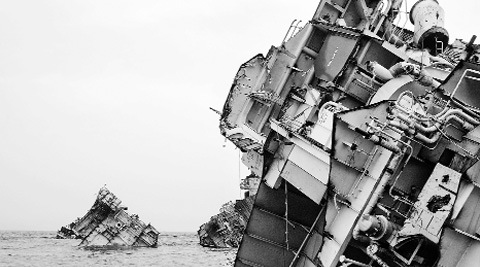
It is the final destination — the graveyard where
ships are broken into pieces and become sheer metal from the mammoth structures
they once were. Located on the Gulf of Khambat, it might not be prominently
marked on most maps of India, but for the shipping industry this is where
reportedly almost half of the world’s ships dock for recycling. “Ships come to
die at Alang and be reborn as something else,” says photographer Shovan Gandhi.
Fascinated by the sight, he has revisited the location more than a couple of
times over a period of seven years, always with a camera. “Permission was of
course very difficult to get. It is a very private area,” adds the 31-year-old.
Select photographs of the region, taken by Gandhi,
will be exhibited at Max Mueller Bhavan from May 9 onwards.
Comprising almost a dozen frames, the collection
largely has grand ships against the backdrop of a gentle sea on an otherwise
empty beach. “Initially what struck me was the scale of operations. The
superstructures that stood there reminded me of works by Anish Kapoor, who has
these large-scale installations in an urban context,” says Gandhi.
So if one image has ship wreckage submerged in water
near the shore, another has twin ships tied with ropes on wet sand. Uniformed
men are seen working on the metal structures in one image, while in another
they walk away from the parked ships as if done for the day. “For many viewers
from the subcontinent, this collection of photographs portrays salient strains
of an almost Dickensian Industrialism, a prevailing socio-economic ecosystem in
which unimportant men can aggregate and die so that dead ships live,” says
Gandhi, who, apart from the photographs, has also been exploring the Alang
market for furniture and light fittings. “Nothing is left, not even the copper
wires. The metal usually goes to the construction lever industry and the market
outside the ship-breaking yard sells a lot of memorabilia from the ship,” says
Gandhi.
It was a conscious decision not to focus on the poor
working conditions of migrant labourers and environmental concerns that are
often raised regarding the region. “I wanted to instead look at the grandeur of
the space,” says Gandhi. Now, he is working on a project in Tihar, documenting
“governance and rehabilitation of the prisoners”. “I like to look at spaces
with historically great value,” he adds.
Source: Indian express.
29 April 2014
No comments:
Post a Comment